Colombo Day Tour
Colombo Day Tour
Meet the representative of “ SHA Vacation” and start your day city tour Colombo.
Colombo city
Colombo is Sri Lanka’s commercial and cultural capital and is located on the western coast of the island. The city has served as an important commercial port city since ancient times and has been the scene of many prominent historical moments.
Heavily influenced by its diverse populace and its rich history, Colombo’s culture, architecture, cuisine and historical attractions make for a multi-cultural melting-pot. Ancient traders came to its ports to gather ivory, precious stones and spices such as cinnamon, cardamom, cloves and pepper. European colonists occupied the city for centuries as well due to its strategic location on an important trade route.
All these cultural and historical influences give Colombo its unique flavour. In modern times the city is home to a diverse group of communities which adds to its splendour and is still known as a shopper’s paradise.
Experience the true colour of Colombo and feel its heartbeat by exploring a variety of attractions as well as interacting with its vibrant people.Visiting Places in below
Pettah Colombo
Immediately east of Fort (across the narrow canal that separates the outer harbour from the Beira Lake) is Pettah, a maze of streets and alleys piled and crammed with goods of every description, from colourful textiles, gold and silver, and colonial-era antiquities to the necessities of everyday life – spices, fruits and vegetables, reeking heaps of dried fish, paraffin, batteries, electrical goods, clothes and footwear. Whatever you are looking for, you’ll find it in Pettah – though shopping here, which can call for determined bargaining, is not for the faint of heart

Old parliament building
This building houses the presidential secretariat and is a remains of British colonial architecture. It is situated in the Colombo Fort, close to the house of the President and has an amazing view of the sea.

Gangarama
Gangaramaya is a Buddhist temple with a fusion of modern architecture and a touch of culture. Being a popular landmark of the city, this complex is built on a lake and consists of a temple, a conference hall for Buddhist monks and a vocational training institute.
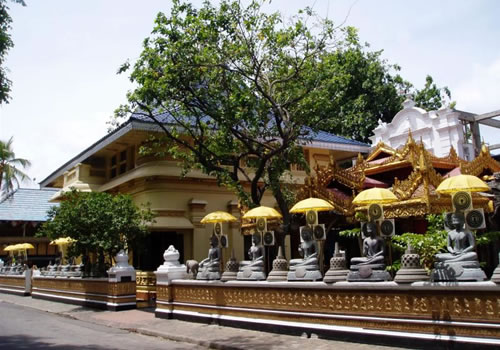
Galle Face Green
This is a massive ocean side urban park, stretching for 500m along the coast line and is located in the heart of the financial district of Colombo. It is perfect for a relaxing evening while watching the sun set. Kite flying is also a popular activity here.
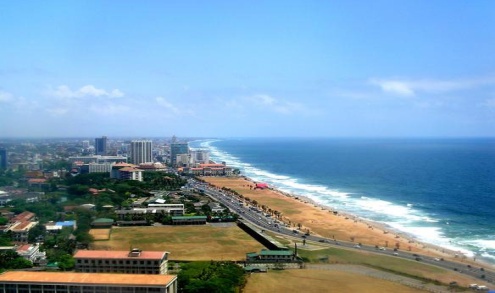
Bandaranaike Memorial International Conference Hall (BMICH)
BMICH is an exclusive convention centre reputed for its luxurious conference facilities and is an ideal location for a complete event. This multi-functional complex consists of 9 buildings and covers 37 acres of land. Beauty pageants, musical dramas, exhibitions, conferences, trade events, and much more are hosted here.
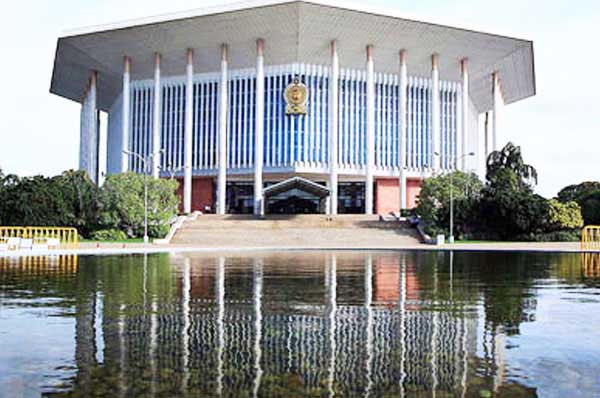
National Museum
At Sir Marcus Fernando Mawatha (also known as Albert Crescent), next to the Viharamahadevi Park, the National Museum was Sri Lanka’s first and was founded in 1877. Its collection spans several centuries and a range of cultures, from the Sinhala kingdoms through to the British era. Highlights include the royal trappings of the last Kings of Kandy. There are also some superb stone sculptures, as well as Hindu bronzes and wooden carvings, Sri Lankan and European furniture and ceramics, and (to Western eyes) a fine array of grotesque masks representing Buddhist demons and deities.
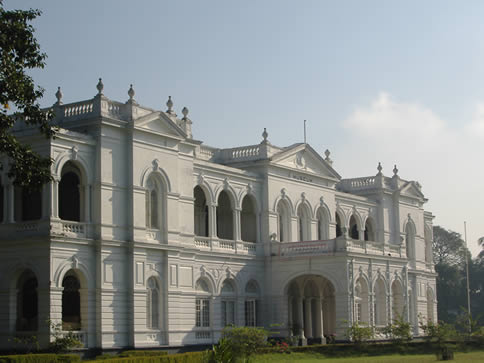
Independence Memorial Hall
The Independence Memorial Hall, most commonly known as the Independence Square, is a National Monument in Sri Lanka. The structure was built in commemoration of the Independence of Sri Lanka from the British rule and to mark the ceremonial start of self rule with the opening of the first parliament on the 4th of February 1948. There is also a statue of the first prime minister of the country right in front of the structure.
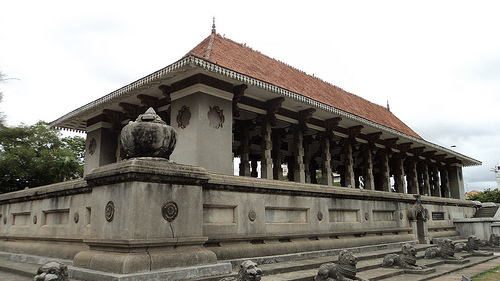
The Arcade – Independence Square
Once the Old Auditor General’s Building, the Arcade – Independence Square is a well refurbished development project which has turned out to be a trendy shopping and entertainment venue. Strategically located, every nook and cranny of the Arcade tells its own story. From landscaped gardens to intricate wooden carvings, the touch of charm cannot be ignored.

Nelum Pokuna Mahinda Rajapaksa Theatre
This theatre which was opened in December 2011 is a performing arts centre in Colombo, Sri Lanka. It’s perfect location in the city has made it an ideal venue for many International gatherings and functions since its establishment. The architecture of the structure has been inspired by the 12th Century Nelum Pokuna (Lotus Pond) which was built by King Parakramabahu the Great during the prosperous era when Polonnaruwa was once the capital.
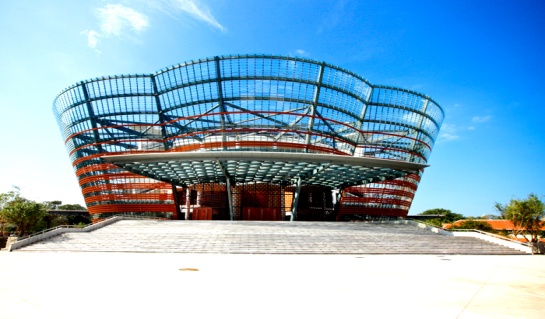
Jami Ul-Alfar Mosque
Located along 2nd Cross Street in Pettah, the Jami Ul-Alfar Mosque is a historic site and a popular tourist destination in the city. Set in the midst of the city’s bazaar district, the mosque was built in 1909 and for many years was also considered as the landmark of Colombo by sailors approaching the port.Decorated in red and white bricks, the mosque attracts many devotees to fulfil their daily prayers and Jummah on Friday’s.
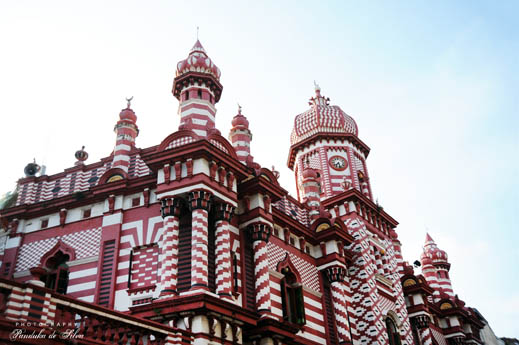
Sri Ponnambalam Vanesar Kovil
Located in Kotahena, a busy area of Colombo within walking distance of St. Anthony’s church, the Sri Ponnambalam Vanesar Kovil which dates back to the mid eighteen hundreds is a sacred Hindu Temple that has been made entirely of granite stone. The patterns of granite are a mesmerizing architectural pattern which provides its calm and peaceful ambience. You can see a myriad of devotees from all over the country gather at the temple to pay homage to the temple deity – Lord Shiva.
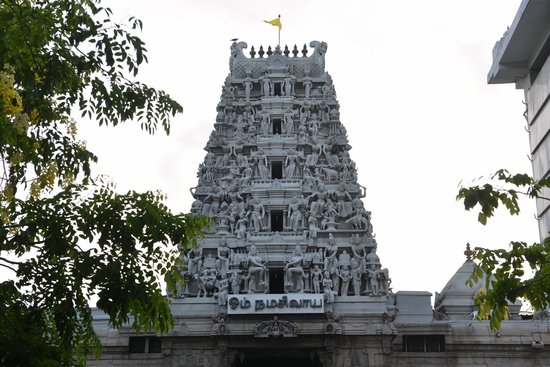
Wolvendaal Church
Another relic of the Dutch period is this stone church on Wolvendaal Street, built in 1749. Worth looking at are the tombstones set into the floor, which were moved from a church within the Fort in 1813.The dates on the tombs of several Dutch governors, whose bones were reinterred here, reveal how risky life could have been for the Dutch conquerors: even during peacetime, the death toll from disease was high and many died after only a short stay in Colombo. Open during usual church hours.
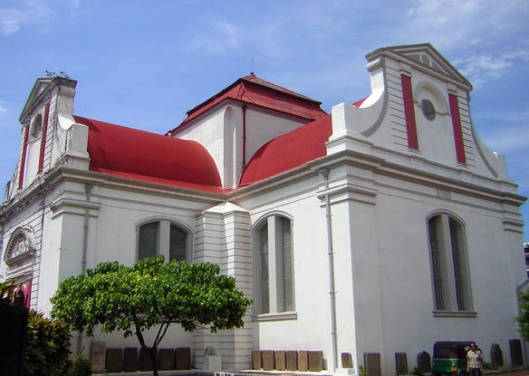
Viharamahadevi Park
Located just across the Town Hall Building, the Viharamahadevi Park is the largest and oldest park in the heart of Colombo. Open to the public, the park was built during the British rule and was formally known as the “Victoria Park” and renamed as Viharamahadevi in honour of the famed historical queen of Sri Lanka, the mother of King Dutugamunu. From a Buddha statue, many fountains, flowers and even an amphitheatre that is used for various performances, the park is the ideal place for long evening walks.
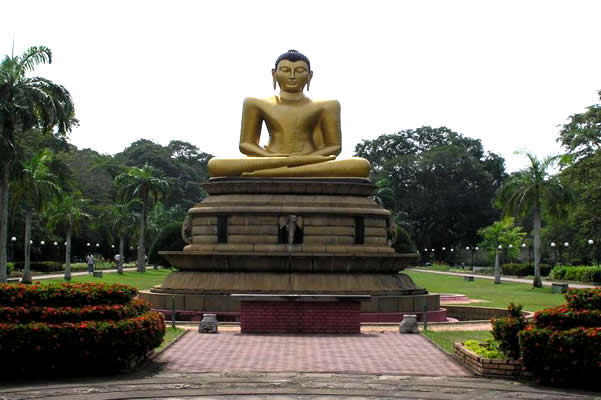
Town Hall Colombo
The current headquarters of the Colombo Municipal Council and the office of the Mayor of Colombo, the Town Hall of Colombo is located in front of the Viharamahadevi Park. The foundation of the building was laid in 1924 while the building which displays a Neo-Classical style was completed in 1927. The building which stands tall in all its glory in the heart of the city is a pleasant sight and houses the administrative staff of the municipal council. The massive landscaped garden is used as a venue for many local events.
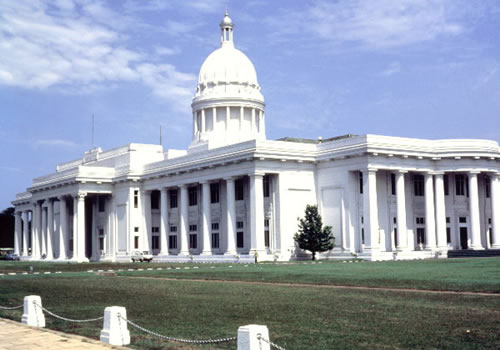
Typical Itinerary
- Pick up from Colombo hotel or Negambo and transfer to Colombo City tour. From Negambo- Approximately 1- 1 1/2 hours drive.
- Visit all above mention Attraction Places in Colombo.
- Transfer to Colombo Hotel or Negambo – Approximately 1- 1/2 hours drive (Express way).
Tour Includes
- Pickup & Return location
- All transportation service whole tour
- Government charges + Tax
- Bottle of Mineral water
- Air-conditioned private transport
- English speaking chauffeur-guide
- All the highway & car parking fees
Tour does not Include
- Meals
- Entrance fees at Locations (as per sightseeing mentioned above)
- Gratuities




